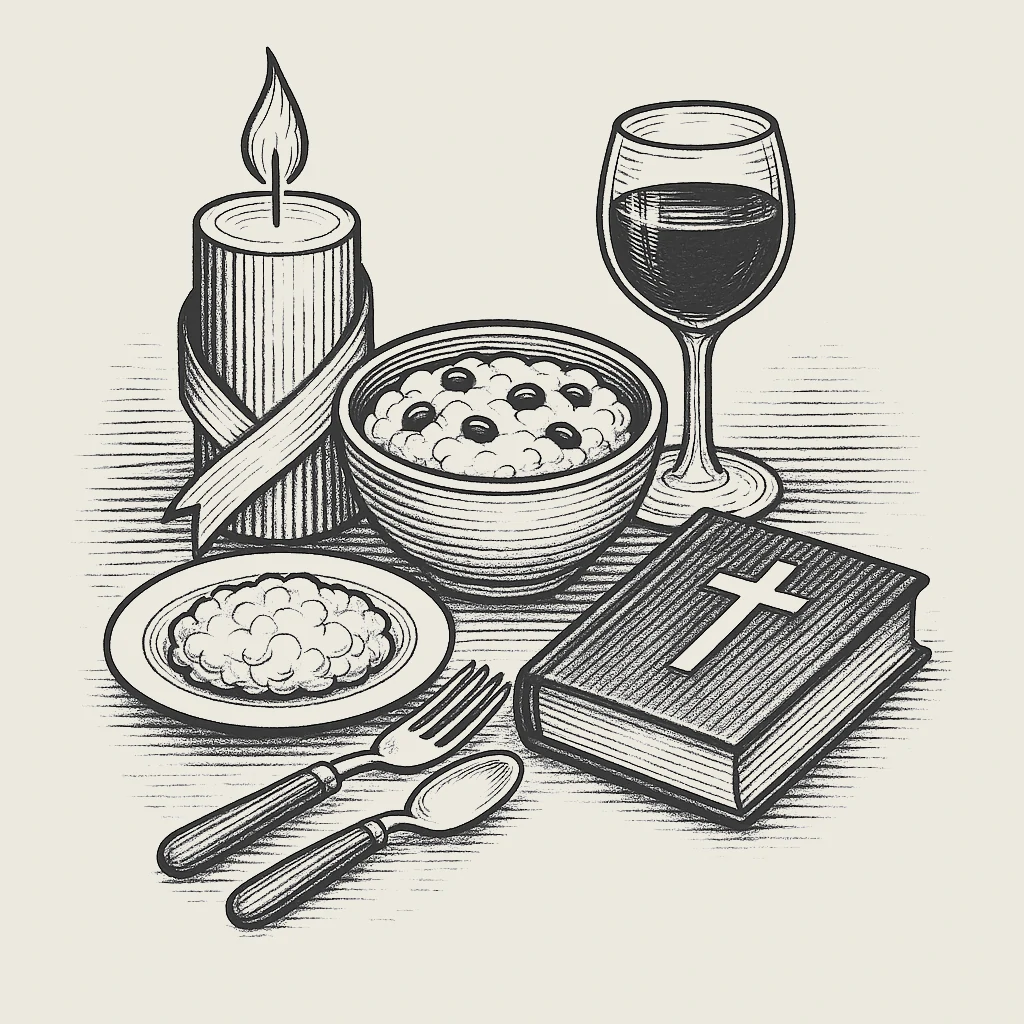Wreaths on the Grave: When to Remove
Symbolism of Wreaths and the Importance of Grave Care
After the farewell ceremony, the burial site is decorated with ritual wreaths. These items symbolize respect for the memory of the deceased and carry deep meaning. Wreaths are often made from pine branches, which have long been associated with eternity and rebirth. Sometimes the question arises, what to do with the ribbons from the wreaths, as they remain after the flowers fade or the structure deteriorates. Grave care is not only a tradition but also a way to express love for the deceased. Cleanliness, order, and the well-maintained state of the burial site help preserve the peace of mind of relatives.
When to Remove Wreaths After the Funeral: A Secular View
Immediately after the farewell, the burial site is decorated with numerous bouquets and wreaths. However, as the flowers wither and the structures wear out, the need for cleaning arises. When to remove the wreaths from the grave after the funeral is a question without a strict answer. Fresh flowers lose their freshness within 3-5 days, and in hot weather, within a day. Artificial wreaths can maintain their appearance for up to a month, after which they begin to fade and deform. The secular approach suggests that cleaning should be done as needed, based on the appearance of the decorations and the overall condition of the grave.
When to Remove Wreaths from the Grave: Religious Traditions
Significance of the 40th Day
According to Christian tradition, the soul of the deceased stays on earth for 40 days. It is on this date that loved ones prepare the burial site, cleaning it of withered flowers and outdated decorations. When to remove the wreaths from the grave from a religious perspective, it is not forbidden to do so earlier, especially if they have lost their appearance. The main thing is that the cemetery remains well-maintained, and the grave does not appear forgotten. Usually, for the fortieth day, the family orders a service, holds memorial events, and tidies up the site.
Restrictions on Cleaning During Holidays
There are periods when visiting cemeteries is not encouraged. During church holidays and on Sundays, cleaning is considered inappropriate. This rule is based on respect for church customs, as well as a desire not to disturb the deceased on special days. If the cleaning date coincides with such a day, it is advisable to reschedule the visit. Following these norms is a sign of respect for the spiritual aspect of the farewell ritual.
Can Wreaths Be Removed Before the 40th Day?
In some cases, wreaths become unfit for use much earlier than the fortieth day. Some people are afraid to touch the grave before this time, citing superstitions or fear of breaking traditions. However, the Orthodox Church's opinion on this matter is clear: if the ritual decorations have deteriorated, cleaning is allowed. It is better to maintain order than to leave old wreaths and dry flowers, which create a sense of abandonment. Damaged compositions can be partially disassembled without violating the overall appearance.
How to Properly Dispose of Wreaths
It is important to understand how to handle ritual items that have served their purpose. Wreaths that have lost their shape should be placed in specially designated areas on the cemetery grounds. Burning them is strictly prohibited, as is discarding them near other graves. Such actions violate the rules of conduct and may offend other visitors. Artificial items are often made from non-biodegradable materials that harm the environment. Therefore, it is crucial to dispose of them carefully and properly, without causing harm to nature.
What to Do if You Cannot Care for the Grave
Sometimes relatives live far away or are unable to visit the cemetery frequently due to health reasons. In such cases, it is advisable to seek the services of specialists who can take care of the burial site. This allows the grave to remain in a respectable condition, even if there is no opportunity to visit it personally. You can also arrange with neighboring plot owners if mutual trust has been established. The main thing is not to allow neglect, as the appearance of the grave reflects the attitude towards the memory of the deceased.
Grave Care After Removing Wreaths
Cleaning the wreaths is just the first step in maintaining order at the burial site. The soil may sink during the first year, especially after heavy rainfall. To level the surface, it is necessary to add soil. It is also recommended to plant hardy annuals, such as marigolds, pansies, or daisies. They will give the grave a neat and tidy appearance. Regular collection of trash, fallen leaves, and branches helps maintain cleanliness. Don't forget to check the stability of the tombstone – if any tilting is detected, it is advisable to fix the issue as soon as possible.
Conclusion
Maintaining order at the burial site is an important ritual that helps express respect for the deceased and preserve their memory. Cleaning the wreaths and caring for the grave are not bound by strict rules. The main thing is to approach the matter with respect, consider the condition of the ritual items, and follow basic norms. Combining common sense with tradition allows one to care for the grave in a dignified manner, without violating either secular or religious norms.
Read also:




